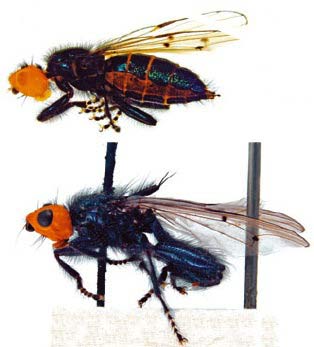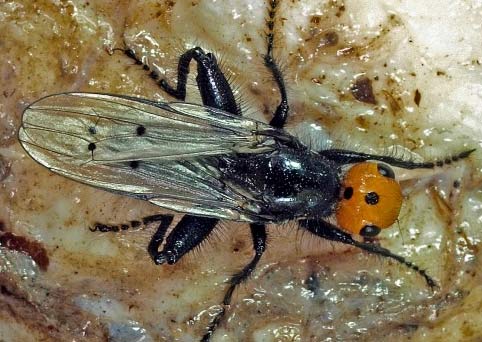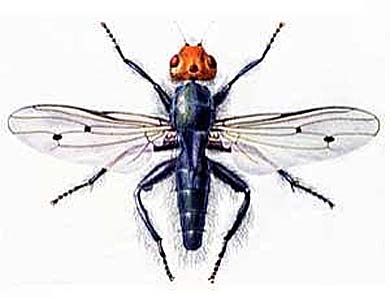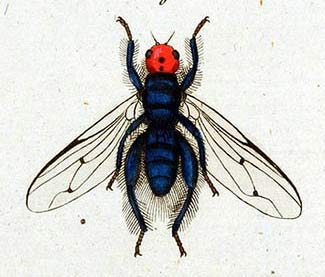Bone Skipper Fly – Eater of Bones

If we told you that as recently as a few years ago, a species was re-discovered after being believed to be extinct, and that this species had a glowing orange head, metallic blue body, and fed on the bones of large animals; you’d probably run for the hills. Well you’d want to, but once you saw it you’d change your mind because this terrifying creature is nothing more than a fly with a terrible name.


The Thyreophora cynophila, or “bone skipper” as it is commonly known, is a species of fly that scientists had long since written off until it was photographed at Sierra de Cebollera natural park in La Rioja, Spain in 2009 after 160 years away from scientists gaze. The lack of sightings is related to the creature’s practice of feeding nocturnally and primarily in the winter. There also has been a legitimate decline in the species thanks to a drop in its food source. The bone skipper feeds off and breads in the marrow of the cracked bones of large dead animals. Since less carcasses like this have been produced thanks to the deforestation and modernization of the oak forest regions of central western Europe (their natural habitat), there’s been less and less specimens, but they are far from extinct.


The bone skipper gets its name from its larval practice of curling itself up and rapidly uncurling in order to “jump” as high as ten to fifteen centimeters from bone to bone of the carcass it is feeding on. Less than half an inch in size, this species sticks out because of its aforementioned bright orange head and shiny body, factors which also play a part in mate selection among the females in the species. Bone skippers are also known to fight over mates. It’s believed that this species doesn’t colonize a carcass until months after its demise, so modern practices of carcass disposal are making it harder and harder for them to feed and live; this means that someday they really could end up extinct. Although their lifestyle is a little gross to us humans, they’re a very interesting creature, and we can only hope that they continue to exist in the future (somebody has to do the job of recycling those bones!).

